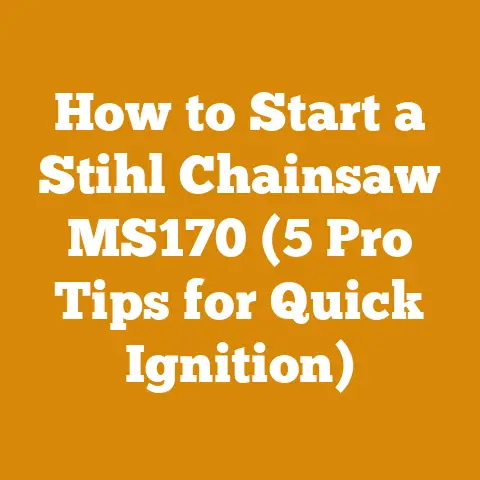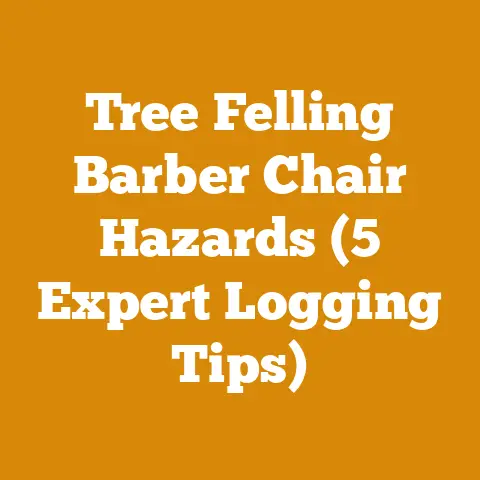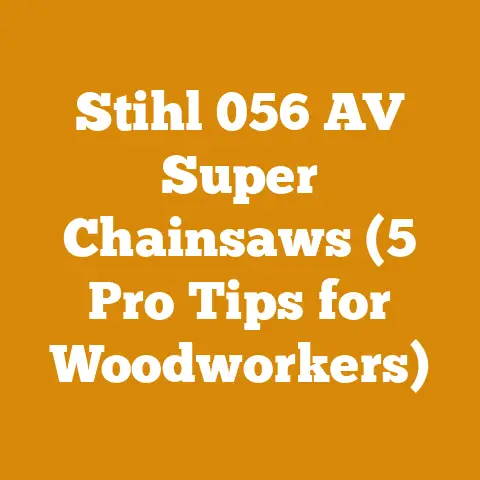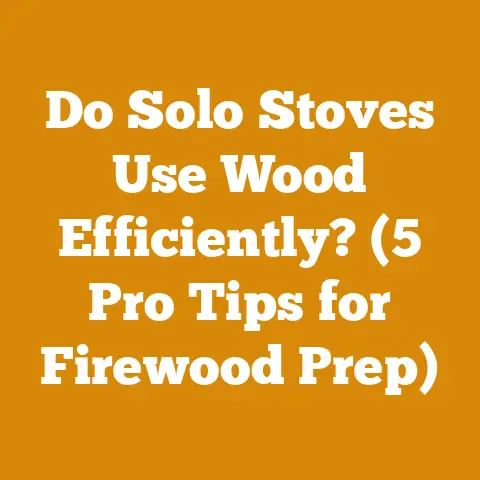Enclose Patio with Windows (7 Timber Tips for Perfect Seal)
The crisp scent of pine hangs heavy in the air, mingling with the earthy aroma of damp wood. It’s a smell that always takes me back to my grandfather’s workshop, a place of sawdust and ingenuity. He had a knack for turning raw timber into things of beauty and utility. One of his most cherished projects was enclosing his patio with windows, creating a sun-drenched haven where he could tinker year-round. Today, I’m going to share my knowledge on how to enclose your patio with windows while keeping a close eye on your budget. This guide dives deep into the timber aspects for a perfect seal, ensuring your enclosed patio becomes a cherished space, just like my grandfather’s.
Enclose Patio with Windows (7 Timber Tips for Perfect Seal)
Turning a patio into an enclosed space with windows is a fantastic way to extend your living area and enjoy the outdoors regardless of the weather. This guide will walk you through seven essential timber tips to ensure a perfect seal, along with a detailed look at the costs involved.
1. Choosing the Right Timber: A Foundation for Success
The type of timber you select is the cornerstone of a successful patio enclosure. It dictates not only the aesthetic appeal but also the durability, insulation, and long-term cost.
-
Wood Species: Different wood species offer varying levels of resistance to moisture, rot, and insects.
- Pressure-Treated Pine: A common and cost-effective choice, pressure-treated pine is treated with chemicals to resist decay. However, it can be prone to warping and requires regular sealing. I’ve used pressure-treated pine for smaller projects, but I always make sure to apply a high-quality sealant, especially in areas prone to moisture.
- Cedar: Naturally resistant to rot and insects, cedar is a beautiful and durable option. It’s more expensive than pine but requires less maintenance. My grandfather swore by cedar for its natural oils and resistance to the elements. He always said, “Cedar pays for itself in the long run.”
- Redwood: Similar to cedar, redwood is naturally resistant to decay and insects. It also has a beautiful reddish hue. However, redwood can be expensive and may not be readily available in all regions.
- Douglas Fir: A strong and stable softwood, Douglas fir is a good option for framing. It’s less resistant to rot than cedar or redwood, so it needs to be properly sealed and maintained.
- Hardwoods (Oak, Maple, etc.): While aesthetically pleasing, hardwoods are generally not recommended for exterior use unless they are specifically treated for weather resistance. They are also significantly more expensive.
-
Wood Quality: Pay close attention to the grade of the timber.
- Construction Grade: Suitable for framing and structural components.
- Appearance Grade: Free of knots and blemishes, ideal for trim and visible surfaces. I always splurge on appearance-grade wood for the areas that will be most visible. It makes a big difference in the overall look.
- Knotty Grade: Contains knots, which can affect strength and appearance. Generally not recommended for critical structural elements.
-
Dimensional Stability: This refers to the wood’s ability to resist warping and twisting as it dries. Kiln-dried timber is more dimensionally stable than green (unseasoned) timber. Kiln-dried lumber is worth the extra cost, especially in climates with high humidity. It minimizes warping and ensures a tighter seal.
Cost Considerations:
- Timber Prices: Timber prices vary significantly depending on the species, grade, and region. According to a 2023 report by Forest2Market, softwood lumber prices have fluctuated considerably due to supply chain disruptions and increased demand. As of Q4 2023, the average price for framing lumber (spruce-pine-fir) in North America ranged from \$400 to \$600 per thousand board feet. Cedar and redwood typically command a premium of 50% to 100% over framing lumber.
- Treatment Costs: Pressure-treating adds to the cost of pine but provides essential protection against decay. Expect to pay an additional \$1 to \$3 per board foot for pressure-treated lumber.
- Sealing and Finishing: High-quality sealants and finishes are crucial for protecting the timber from the elements. A good exterior-grade sealant can cost between \$30 and \$50 per gallon, and you’ll need to factor in the cost of brushes, rollers, and other application tools.
Actionable Tip: Before committing to a specific timber species, research local availability and pricing. Contact local lumberyards and compare quotes to ensure you’re getting the best value for your money. I always ask for samples of different wood species to see how they look and feel in person. It helps me make a more informed decision.
2. Framing with Precision: The Backbone of Your Enclosure
The framing provides the structural support for your enclosed patio. Accurate measurements and precise cuts are essential for a tight, weather-resistant seal.
- Accurate Measurements: Use a reliable measuring tape and level to ensure all dimensions are accurate. Double-check your measurements before cutting any timber. My grandfather always said, “Measure twice, cut once.” It’s a simple rule, but it saves a lot of time and money.
- Square Framing: Ensure all corners are perfectly square. Use a framing square or the 3-4-5 rule to verify squareness. A slightly out-of-square frame can create significant problems when installing windows and doors.
- Proper Spacing: Space studs and joists according to local building codes. Typically, studs are spaced 16 inches or 24 inches on center.
- Secure Connections: Use appropriate fasteners, such as screws or nails, to securely connect the framing members. Consider using construction adhesive for added strength. I prefer screws over nails for framing because they provide a stronger and more durable connection.
Cost Considerations:
- Framing Lumber: Framing lumber is typically less expensive than appearance-grade lumber. As mentioned earlier, the average price for framing lumber ranges from \$400 to \$600 per thousand board feet.
- Fasteners: Screws, nails, and construction adhesive can add up. Budget approximately \$50 to \$100 for fasteners, depending on the size of your project.
- Tools: If you don’t already own them, you’ll need to factor in the cost of tools such as a circular saw, miter saw, level, measuring tape, and framing square. Renting tools can be a cost-effective option for occasional projects. I’ve found that investing in quality tools pays off in the long run. They make the job easier and last longer.
Actionable Tip: Create a detailed framing plan before you start cutting any timber. This will help you avoid mistakes and ensure you have enough materials. I like to use a CAD program to create a 3D model of the framing. It helps me visualize the project and identify any potential problems.
3. Window Selection: Balancing Aesthetics and Performance
The windows you choose will have a significant impact on the appearance, energy efficiency, and cost of your enclosed patio.
-
Window Types:
- Single-Pane Windows: The least expensive option, but they offer poor insulation and are not recommended for climates with extreme temperatures.
- Double-Pane Windows: Offer significantly better insulation than single-pane windows. They are a good choice for most climates.
- Triple-Pane Windows: Provide the best insulation, but they are also the most expensive. They are a good choice for climates with very cold winters or hot summers.
- Vinyl Windows: Low-maintenance and energy-efficient. A popular choice for patio enclosures.
- Aluminum Windows: Durable and strong, but they conduct heat and cold more readily than vinyl windows.
- Wood Windows: Aesthetically pleasing but require more maintenance than vinyl or aluminum windows.
-
Window Sizes: Standard window sizes are generally less expensive than custom sizes.
- Window Features: Consider features such as low-E glass, argon gas fill, and thermal breaks to improve energy efficiency.
Cost Considerations:
- Window Prices: Window prices vary widely depending on the type, size, and features. Single-pane windows can cost as little as \$50 per window, while triple-pane windows can cost several hundred dollars per window.
- Installation Costs: Professional window installation can cost between \$100 and \$300 per window, depending on the complexity of the job.
- Permits: You may need a building permit to install windows. Permit fees vary depending on your location.
Actionable Tip: Get quotes from multiple window suppliers and installers. Compare prices and features carefully before making a decision. I always ask for references from previous customers before hiring a window installer.
4. Sealing the Gaps: Preventing Air and Water Leaks
Proper sealing is critical for preventing air and water leaks, which can lead to drafts, moisture damage, and increased energy costs.
- Caulking: Use high-quality exterior-grade caulk to seal gaps around windows and doors. Choose a caulk that is paintable and flexible. I prefer silicone-based caulk for its durability and water resistance.
- Weather Stripping: Install weather stripping around doors and windows to create a tight seal.
- Flashing: Use flashing to prevent water from penetrating the framing around windows and doors.
- Expanding Foam: Use expanding foam to fill large gaps around windows and doors. Be careful not to over-apply expanding foam, as it can warp the framing. I’ve seen expanding foam used incorrectly, and it can create a real mess. Use it sparingly and follow the manufacturer’s instructions.
Cost Considerations:
- Caulk: A tube of high-quality caulk costs between \$5 and \$10.
- Weather Stripping: Weather stripping costs between \$1 and \$3 per foot.
- Flashing: Flashing costs between \$2 and \$5 per foot.
- Expanding Foam: A can of expanding foam costs between \$5 and \$10.
Actionable Tip: Inspect your patio enclosure regularly for signs of leaks. Repair any leaks promptly to prevent further damage. I make it a habit to inspect my patio enclosure every spring and fall. It’s a good way to catch problems early before they become major issues.
5. Insulation: Enhancing Comfort and Energy Efficiency
Insulation helps to keep your enclosed patio comfortable year-round and reduces energy costs.
-
Insulation Types:
- Fiberglass Insulation: A common and cost-effective option.
- Spray Foam Insulation: Provides excellent insulation and air sealing. More expensive than fiberglass insulation.
- Rigid Foam Insulation: Can be used to insulate walls and ceilings.
- Batt Insulation: Pre-cut sections of insulation that fit between studs.
-
R-Value: The R-value of insulation measures its resistance to heat flow. The higher the R-value, the better the insulation. Choose an R-value that is appropriate for your climate.
Cost Considerations:
- Insulation Prices: Insulation prices vary depending on the type and R-value. Fiberglass insulation is typically the least expensive option, while spray foam insulation is the most expensive.
- Installation Costs: Professional insulation installation can cost between \$1 and \$3 per square foot, depending on the type of insulation and the complexity of the job.
Actionable Tip: Research local building codes to determine the minimum R-value requirements for insulation in your area. Failing to meet the minimum R-value requirements can result in fines and delays.
6. Ventilation: Preventing Moisture Buildup
Proper ventilation is essential for preventing moisture buildup, which can lead to mold and mildew growth.
-
Ventilation Options:
- Windows: Open windows to allow fresh air to circulate.
- Vents: Install vents in the walls or ceiling to allow air to escape.
- Exhaust Fans: Use exhaust fans to remove moisture from the air.
-
Placement: Position vents and exhaust fans strategically to maximize airflow.
Cost Considerations:
- Vent Prices: Vents cost between \$10 and \$30 each.
- Exhaust Fan Prices: Exhaust fans cost between \$20 and \$100 each.
- Installation Costs: Professional vent or exhaust fan installation can cost between \$50 and \$150 per unit.
Actionable Tip: Install a dehumidifier to remove excess moisture from the air. A dehumidifier can be a lifesaver in humid climates.
7. Finishing Touches: Protecting and Beautifying Your Timber
The finishing touches are what will protect your timber from the elements and give your enclosed patio a polished look.
- Priming: Apply a coat of primer to the timber before painting or staining. Primer helps to seal the wood and provides a better surface for the paint or stain to adhere to.
- Painting or Staining: Choose a high-quality exterior-grade paint or stain that is designed to protect the timber from the elements.
- Sealing: Apply a clear sealant to the timber after painting or staining. Sealant helps to protect the paint or stain from fading and chipping. I always use a sealant with UV protection to prevent the paint or stain from fading in the sun.
Cost Considerations:
- Primer: A gallon of primer costs between \$20 and \$40.
- Paint or Stain: A gallon of paint or stain costs between \$30 and \$60.
- Sealant: A gallon of sealant costs between \$30 and \$50.
- Brushes and Rollers: Brushes and rollers cost between \$10 and \$30.
Actionable Tip: Apply multiple coats of paint or stain for maximum protection. Two coats are good, but three coats are even better.
Detailed Cost Breakdown: A Realistic Budget
Let’s break down the costs involved in enclosing a patio with windows, focusing on the timber aspects and sealing. This is a general estimate, and prices will vary depending on your location, the size of your patio, and the materials you choose. I’ll include some global averages and benchmarks where available.
Assumptions:
- Patio Size: 10ft x 12ft (120 sq ft)
- Framing: Pressure-Treated Pine
- Windows: Double-Pane Vinyl (4 windows)
- Insulation: Fiberglass Batt Insulation
- Location: United States (adjust based on your region)
Cost Categories:
-
Timber Purchase/Harvesting Costs:
- Framing Lumber (Pressure-Treated Pine):
- Estimated Lumber Required: 2x4s, 2x6s, 4x4s (depending on design)
- Volume Calculation: Let’s assume 200 board feet.
- Price per Board Foot (Pressure-Treated Pine): \$3 – \$5 (depending on grade and region)
- Total Cost: 200 board feet x \$4/board foot = \$800
- Trim Lumber (Cedar or Redwood – optional):
- Estimated Lumber Required: 50 board feet
- Price per Board Foot (Cedar/Redwood): \$8 – \$12
- Total Cost: 50 board feet x \$10/board foot = \$500
- Framing Lumber (Pressure-Treated Pine):
-
Window Costs:
- Double-Pane Vinyl Windows (4 windows):
- Average Cost per Window: \$200 – \$400
- Total Cost: 4 windows x \$300/window = \$1200
- Double-Pane Vinyl Windows (4 windows):
-
Insulation Costs:
- Fiberglass Batt Insulation (R-13 for walls, R-30 for ceiling):
- Estimated Square Footage: 400 sq ft (walls and ceiling)
- Price per Square Foot: \$0.50 – \$1.00
- Total Cost: 400 sq ft x \$0.75/sq ft = \$300
- Fiberglass Batt Insulation (R-13 for walls, R-30 for ceiling):
-
Sealing and Weatherproofing Costs:
- Caulk (Exterior-Grade Silicone):
- Estimated Tubes Required: 10 tubes
- Price per Tube: \$5 – \$10
- Total Cost: 10 tubes x \$7.50/tube = \$75
- Weather Stripping:
- Estimated Length Required: 50 feet
- Price per Foot: \$1 – \$3
- Total Cost: 50 feet x \$2/foot = \$100
- Flashing:
- Estimated Length Required: 20 feet
- Price per Foot: \$2 – \$5
- Total Cost: 20 feet x \$3.50/foot = \$70
- Expanding Foam:
- Estimated Cans Required: 3 cans
- Price per Can: \$5 – \$10
- Total Cost: 3 cans x \$7.50/can = \$23
- Caulk (Exterior-Grade Silicone):
-
Fasteners and Hardware Costs:
- Screws, Nails, Construction Adhesive: \$100
-
Finishing Costs:
- Primer: \$30
- Exterior Paint/Stain: \$50
- Brushes, Rollers: \$20
- Total Finishing Costs: \$100
-
Labor Costs (if hiring professionals):
- Framing: \$500 – \$1000
- Window Installation: \$400 – \$800
- Insulation: \$200 – \$400
- Total Labor Costs (estimate): \$1100 – \$2200
-
Permit Costs (if required):
- Varies widely; estimate \$50 – \$200
Total Estimated Costs:
- Materials Only: \$800 (framing) + \$500 (trim) + \$1200 (windows) + \$300 (insulation) + \$75 (caulk) + \$100 (weather stripping) + \$70 (flashing) + \$23 (foam) + \$100 (fasteners) + \$100 (finishing) = \$3268
- With Professional Labor: \$3268 (materials) + \$1100 (labor) = \$4368
- With Professional Labor (High-End): \$3268 (materials) + \$2200 (labor) = \$5468
Contingency: Add 10% – 15% for unexpected costs: \$327 – \$820
Final Estimated Cost Range: \$3595 – \$6288
Data Points and Benchmarks:
- Lumber Price Volatility: According to Random Lengths, lumber prices can fluctuate significantly based on demand, trade policies, and weather events. Keep an eye on market trends.
- Window Energy Efficiency: Energy Star-certified windows can save you 7-15% on your energy bills annually.
Cost Optimization Tips:
- DIY Approach: If you have the skills and time, doing the framing, insulation, and finishing work yourself can save a significant amount on labor costs.
- Material Sourcing: Shop around for the best prices on lumber and windows. Consider buying in bulk or looking for discounts.
- Off-Season Purchases: Lumber and window prices may be lower during the off-season (fall and winter).
- Reclaimed Materials: Consider using reclaimed lumber or windows to save money and add character to your patio enclosure. My grandfather often used reclaimed wood from old barns. It gave his projects a unique charm.
Calculations and Formulas
- Calculating Board Feet: Board feet = (Thickness in inches x Width in inches x Length in feet) / 12
- Estimating Insulation Needs: Calculate the total square footage of walls and ceiling to determine the amount of insulation needed.
- Estimating Drying Time for Wood: Drying time depends on the wood species, thickness, and ambient humidity. A general rule of thumb is 1 year per inch of thickness for air-drying.
Challenges Faced by Small-Scale Loggers and Firewood Suppliers
Small-scale loggers and firewood suppliers often face challenges such as:
- Fluctuating Timber Prices: Market volatility can make it difficult to plan and budget.
- Equipment Costs: Chainsaws, splitters, and other equipment can be expensive to purchase and maintain.
- Labor Costs: Finding reliable and skilled labor can be a challenge, especially in rural areas.
- Regulations and Permits: Complying with environmental regulations and obtaining necessary permits can be time-consuming and costly.
- Seasonality: Demand for firewood is seasonal, which can impact income.
Actionable Takeaways and Next Steps
- Plan Thoroughly: Create a detailed plan before you start any work.
- Choose the Right Materials: Select timber and windows that are appropriate for your climate and budget.
- Seal Properly: Pay close attention to sealing and weatherproofing to prevent air and water leaks.
- Insulate Well: Insulate your patio enclosure to enhance comfort and energy efficiency.
- Ventilate Properly: Ensure proper ventilation to prevent moisture buildup.
- Get Multiple Quotes: Compare prices from multiple suppliers and contractors.
- Consider DIY: If you have the skills and time, consider doing some of the work yourself to save money.
Conclusion
Enclosing a patio with windows is a rewarding project that can add value to your home and provide a comfortable living space. By following these seven timber tips and carefully managing your budget, you can create a beautiful and functional enclosed patio that you’ll enjoy for years to come. Remember my grandfather’s advice: “Do it right the first time, and you won’t have to do it again.” Good luck with your project!






